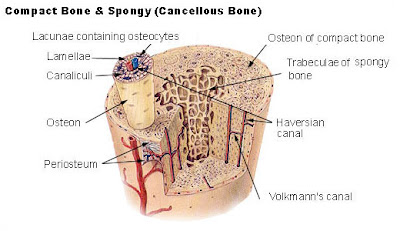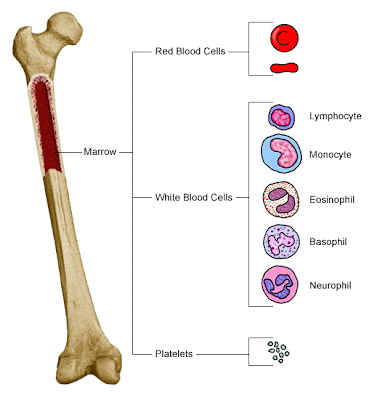This type of cancer does not form a tumor mass, but the blood vessel and meet with the function of normal blood cells. Leukemia (pronounced loo-KEE-mee-uh) is a form of cancer in which the body produces too many white blood cells. Many forms of leukemia have been identified.
SymptomsDamage to the bone marrow, by way of displacing the normal bone marrow cells with higher numbers of immature white blood cells, results in a lack of blood platelets, which are important in the blood clotting process. This means people with leukemia may easily become bruised, bleed excessively, or develop pinprick bleeds (petechiae).
White blood cells, which are involved in fighting pathogens, may be suppressed or dysfunctional. This could cause the patient's immune system to be unable to fight off a simple infection or to start attacking other body cells. Because leukemia prevents the immune system from working normally, some patients experience frequent infection, ranging from infected tonsils, sores in the mouth, or diarrhea to life-threatening pneumonia or opportunistic infections.
Finally, the red blood cell deficiency leads to anemia, which may cause dyspnea and pallor.
Some patients experience other symptoms. These symptoms might include feeling sick, such as having fevers, chills, night sweats and other flu-like symptoms, or feeling fatigued. Some patients experience nausea or a feeling of fullness due to an enlarged liver and spleen; this can result in unintentional weight loss. If the leukemic cells invade the central nervous system, then neurological symptoms (notably headaches) can occur.
All symptoms associated with leukemia can be attributed to other diseases. Consequently, leukemia is always diagnosed through medical tests.
The word leukemia, which means 'white blood', is derived from the disease's namesake high white blood cell counts that most leukemia patients have before treatment. The high number of white blood cells are apparent when a blood sample is viewed under a microscope. Frequently, these extra white blood cells are immature or dysfunctional. The excessive number of cells can also interfere with the level of other cells, causing a harmful imbalance in the blood count.
Some leukemia patients do not have high white blood cell counts visible during a regular blood count. This less-common condition is called aleukemia. The bone marrow still contains cancerous white blood cells which disrupt the normal production of blood cells. However, the leukemic cells are staying in the marrow instead of entering the bloodstream, where they would be visible in a blood test. For an aleukemic patient, the white blood cell counts in the bloodstream can be normal or low. Aleukemia can occur in any of the four major types of leukemia, and is particularly common in hairy cell leukemia.
Causes of Leukemia: Still Not KnownScientists are hard at work trying to determine the underlying causes of leukemia. Perhaps by knowing more about the various causes of leukemia, scientists and doctors can hope to find breakthroughs in treatment as well. Already, there are some well-established facts about leukemia, but these do not necessarily shed light on the possible causes of leukemia. For instance, science now knows that leukemia is more frequent in males than females, and that people of a certain heritage are more likely to have it than others, yet this still doesn't explain much about the causes of leukemia.
Scientists and the cancer experts at Cancer Treatment Centers of America hope to one day know the causes of leukemia, so that treatments can be improved. However, until such time, the most appropriate course of action is to stay informed about the possible causes of leukemia by taking advantage of the wealth of information available through Cancer Treatment Centers of America.

 The sternum is composed of highly vascular cancellous tissue, covered by a thin layer of compact bone which is thickest in the manubrium between the articular facets for the clavicles.
The sternum is composed of highly vascular cancellous tissue, covered by a thin layer of compact bone which is thickest in the manubrium between the articular facets for the clavicles. 
